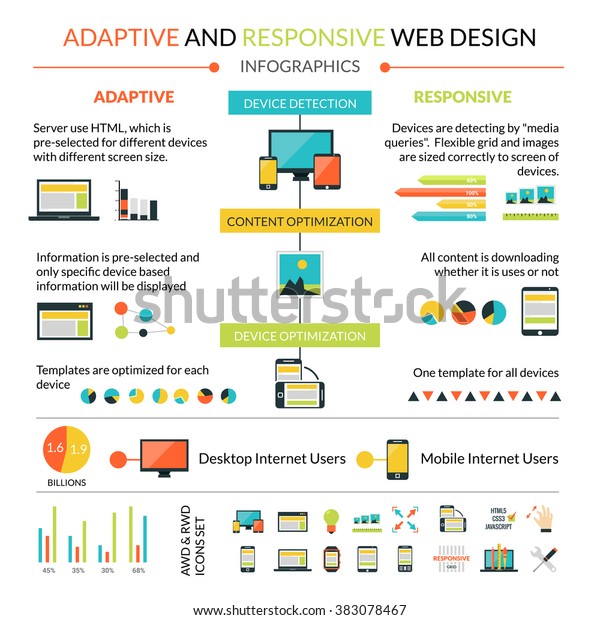Fascinated In Learning Just How Website Style Has Advanced? Explore The Trip From Simple Styles To User-Centric Strategies
Fascinated In Learning Just How Website Style Has Advanced? Explore The Trip From Simple Styles To User-Centric Strategies
Blog Article
Posted By-Jonasson Dodson
In the past, internet sites were easy and focused on information. Navigating was straight, and layout was for desktops. Currently, user experience is essential. Data guides layouts for simple navigating. Receptive formats fit various devices. Today, dark setting decreases stress, and minimal food selections boost navigating. Interactive attributes engage individuals, and vibrant visuals attract attention. AI assimilation increases engagement. See exactly how style has progressed to boost your online trip.
Early Days of Web Design
In the very early days of website design, simpleness reigned supreme. Web sites were basic, with restricted colors, typefaces, and layouts. The emphasis got on supplying details instead of flashy visuals. Customers accessed the web with slow dial-up links, so rate and functionality were crucial.
Navigation menus were straightforward, usually situated on top or side of the page. Websites were created for computer, as mobile browsing wasn't yet prevalent. Content was king, and developers focused on simple readability over complex layout components.
HTML was the main coding language made use of, and designers needed to function within its restrictions. Animations and interactive functions were minimal compared to today's standards. Internet sites were static, with little vibrant content or personalized user experiences.
Increase of User-Focused Design
With the evolution of site design, a change towards user-focused layout concepts has actually come to be progressively famous. Today, producing sites that prioritize individual experience is essential for involving visitors and achieving company goals. User-focused design includes recognizing the needs, preferences, and habits of your target market to customize the site's format, content, and includes appropriately.
web designers near me carry out complete research study, such as individual studies and usability screening, to collect understandings and responses straight from users. This data-driven method aids in developing instinctive navigation, clear calls-to-action, and visually enticing user interfaces that reverberate with site visitors. By putting the individual at the facility of the design process, internet sites can supply a much more individualized and satisfying experience.
Responsive layout has additionally emerged as a crucial element of user-focused layout, ensuring that sites are optimized for different devices and screen dimensions. This versatility enhances access and usability, satisfying the varied means individuals connect with websites today. Basically, the rise of user-focused design symbolizes a change towards creating electronic experiences that prioritize the requirements and assumptions of completion individual.
Modern Trends in Web Design
Check out the current patterns forming web design today. One noticeable pattern is dark mode design, using a smooth and contemporary look while reducing eye strain in low-light settings. https://www.medicaleconomics.com/view/5-ways-to-improve-your-practice-s-digital-marketing-efforts-in-2022 is minimalist navigation, streamlining menus and enhancing customer experience by concentrating on essential elements. Integrating micro-interactions, such as animated buttons or scrolling results, can create a much more engaging and interactive web site. Responsive style continues to be critical, making certain smooth individual experiences throughout numerous tools. Furthermore, making use of vibrant typography and asymmetrical formats can include visual interest and accentuate specific content.
Integrating AI modern technology, like chatbots for customer assistance or tailored recommendations, boosts individual engagement and streamlines processes. Access has likewise end up being a considerable fad, with designers focusing on inclusive design techniques to cater to varied customer requirements. Embracing sustainability by maximizing internet site efficiency for speed and efficiency is another emerging fad in web design. Working together with customer responses and data analytics to repeat and boost style continuously is essential for staying pertinent in the ever-evolving digital landscape. By accepting these modern-day patterns, you can develop an aesthetically attractive, user-friendly site that reverberates with your target market.
Conclusion
As you review the advancement of web site design from the early days to now, you can see exactly how user-focused design has ended up being the driving pressure behind modern-day patterns.
Accept the trip of adjustment and adaptation in website design, constantly maintaining the user experience at the forefront.
Keep present with the most up to date fads and modern technologies, and never quit developing your method to produce visually stunning and straightforward web sites.
Advance, adapt, and develop - the future of website design remains in your hands.
